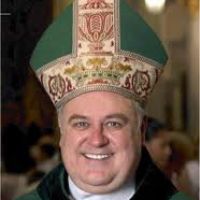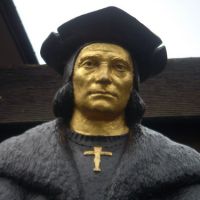A blog post I saw today has got me to want to revisit the Governor Haley Barbour comments on the Citizen Councils. First some background.
Some of the more interesting and fun reporting on Mike Huckebee in 2007/08 was done by Hanna Rosin over at Slate. She had a fun article called What's Huck Hiding? Searching for the lost Huckabee tapes. Basically these tapes were around but NO ONE was giving them up. The article is fun and informative so it is a good read even at this date. She sort of goes into theories what might be on the Huckabee preaching tapes. Here is one:
2. Race—Pine Bluff was a very racially divided town, recalls Bruce Rodtnick, who was minister of music when Huckabee came on as pastor. African-Americans went to their own churches and whites to theirs. One Sunday morning in 1984, after Huckabee's sermon had been broadcast on the radio, a young black man called the church to say he'd heard it and been saved, and asked whether he could join the congregation. Huckabee let him come to services, but only after much resistance from the congregation. Huckabee did the right thing, but he also had to mollify his congregation, and what sounded racially progressive in Pine Bluff in 1984 may be cringe-worthy now.
Now we have no idea if that happened. But this reporter is hitting on a truth here. People that were trying to make people progress in racial matters might have to use language and make alliances that well don't make great TV news today. However that was the reality.
Lets now get much more close to Haley Barbour's world of Mississippi.
ESPN at times does some very quality reporting that links the complexities of life to sports. One of the best shows that does this is ESPN 30 for 30. If you love football or hate football it is almost impossible not to like a recent show they did. In fact I think it might be one of the best that was ever produced by them was The Best That Never Was that focused on the amazing recruitment and aftermath of Football player Marcus Dupree.
The director says in part:
Philadelphia, Mississippi, was the site of one of the most notorious acts of terrorism during the Civil Rights Era in the 1960s: the murders of three young men helping to register black voters who had come to Philadelphia in 1964 to investigate the burning of a church that supported civil-rights activities. Marcus was born a month before the killings, and eventually would join the first class to go through integrated public schools in the state.
When Marcus was establishing himself as the best high school running back in the nation, Philadelphians white and black took pride in him, and in the fully integrated team that he led. He was the town’s first shared joy. It would be naive to believe that Marcus singlehandedly gave rise to a “New South.” But it would be cynical to disbelieve that he did help change the lives of the people of a small town with a horrible past. It is here that the best of sport still resides—in its ability to tear down the isolation and separateness that permeate everyday life in America, and to give people something bigger than themselves to share, a way to transcend the distinctions that otherwise keep them apart.
For this experience, Marcus feels blessed beyond any measure of wealth or fame that might have come his way had things played out differently. “The Best That Never Was” is a story infused with sadness and loss. But its hero is a man who is at peace with it all.
Now that is not the main focus of the story but it is ever in the background. In fact out of the blue comes in one of the major figures of those tragic killings in Mississippi. That is the infamous Cecil R. Price SR whose photo was well known to all American. As noted by one reviewer:
Upon the end of his football career, Dupree turned to Cecil Price Sr. This was unusual because Price Sr. was a sheriff in Mississippi and had served time in prison for allegedly playing a role in the death of 3 civil rights workers in 1964 which loosely gave the premise for the film “Mississippi Burning.” Price Sr., whose son, Cecil Price Jr. was a teammate of Dupree’s during their high school years, helped Dupree by allowing him to work as a truck driver and got the young man a license and a career. Ironically, this man, this white man, this potentially hated racist man, took care of Marcus Dupree when so many of his friends, family and yes, black people, had left him behind.
This is the same Cecil Dupree that would have the young Marcus Dupree over to his house when he was a small kid.
Welcome to the complex world of Haley Barbour's Mississippi .
Now I use this all as background because well Haley was getting into politics about the time that so much of the Civil Rights work in Mississippi had to be really implemented! White Mississippi folks had accepted it was coming but many were not too happy or in a hurry about it. I use my own Mississippi conenctions as a reference point
Which leads us to a blog entry by a Mississippi Politico this morning. See Barbour, Citizens Council and Race
Now this guy is a Mississippi Democrat politics that works to get Dems elected so I of course am expecting some bias here. He says:
At first I thought he might have done it on purpose. It’s the Southern Strategy and code words, straight out of the Ronald Reagan playbook, which Barbour helped to write. Barbour’s path to the Republican nomination would include winning the South in spades, and he figures winks and nods can help.
I could go on and on about what is called the "Southern Strategy" by some but that is another blog post.
Later he says regarding the now infamous quote:
Upon reading this, I started to consider that perhaps this really wasn’t a calculated statement so much as an honest one. It’s what he believes, how he thinks and he spoke without a filter. (I have little doubt this is how he feels; I wonder about whether or not he ever really speaks without a filter.).
Well this might be true. I at first thought it might have been calculated to perhaps preempt some rather awkward association with the Council of Conservative Citizens. Maybe not.
In that blog he quotes Ipse Blogit a Mississippi blogger that looks into these statements at Haley's Blind Spot, And Ours .
He says in part:
Oh, ok. "Just a figure of speech." Sorry, but the choices one makes in speech -- conscious or not -- prove one's character by circumstantial evidence. In both the "whorehouse" and the "Citizen's Council" remarks, our Governor has exposed the fact that his worldview is distorted by Mississippi's racist past.Now, there is a difference between active racism, which acts to hurt or oppress an insular minority group because of their race or ethnicity -- and passive racism, which accepts stereotypes about that minority group(for example, that children of impovershed communities would be better off in a whorehouse). The latter isn't good; but it's not the former, either. Most of us born into the majority race, or into the more empowered economic sector of our society, have the same blind spot as Governor Barbour. The Governor's positive remark about the Citizen's Council shouldn't be (dare I say it) whitewashed. But neither should we take pains to remove the speck in Gov. Barbour's eye to repair his blind spot, before we've removed the log that blinds our own perspective.
Now I don't think Governor Barbour is racist at all. I think like many people he was trying to explain a complex time. None of which is so black and white as people in 2010 want to make it out. I don't think this is about "code words" to get the racists on board.
It is a man that is trying to explain and perhaps even comprehend himself the land and people that He ,the football player Dupre and the convicted Sheriff Price mentioned above share together. No not everyone involved with the Citizen Councils were Saints. But not everyone was a demon either. Life it appears is much more complex than that. Just ask Jimmy Carter
Barbour I see got on the Richard Nixon campaign in 1968. That is critical because it seems early on that Barbour was not going to be a Wallace guy.
Some tapes came up again recently with Nixon saying some not very nice things about various ethnic groups. But it was Richard Nixon that did a lot of the heavy lifting to get the LBJ legislation and various Court orders implemted in the South including Mississippi.
Nixon's work on intergration and the Southern Schools is not much talked about but it happened. Barbour saw the times and he did his best to advance progress in my view. Haley it appears very early on on his life not to join the FIREATERS of the time. He was joining the establishment. Sometimes the establishment while working for change must make sure things don't blow up in the process and cause much more destruction. No one erects monuments to these people (well not the GOPERS) but they are needed. In other words Haley Barbour , unless he becomes President is unlikely to have Space Centers and Naval vessels named after him. That is reserved for Mississippi Democrats like Senator John Stennis.
I am no fan of the CITIZEN COUNCILS at all. I have ranted about the Council of Conservative Citizens before. I also stand by that we need to vet Barbour to make sure he does not have any unsavory connections to the council. However we need to be careful here. Today Mississippi is one of the most integrated places in the nation to a large degree. That happened partly because of the work of Dems and Gopers alike that had to walk a tightrope while dealing with politics that was quite personal and quite family.
Thursday, December 23, 2010
The Complex World of Haley Barbour's Mississippi
Posted by
James H
at
12/23/2010 10:29:00 AM
![]()
Labels: 12, council of conservative citizens, GOP, THE SOUTH
Subscribe to:
Post Comments (Atom)















3 comments:
Thanks for the response. I linked to it, and provide a quick insight into Barbour and the CCC.
http://www.bluedotgroup.com/2010/12/opinionated-catholic-the-complex-world-of-haley-barbours-mississippi/
Thanks going there now
Andy you summed it up better in one sentence than what I did in all those paragraphs
Post a Comment